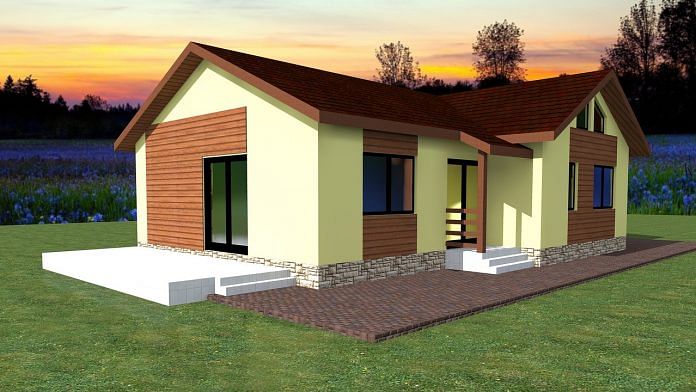By the end of this decade, as many as three billion people will be in need of better housing. Meeting that need would mean building 96,000 new homes every day, according to UN Habitat.
Could giant 3D printers be one of the solutions?
They can produce houses cheaper and faster than traditional building techniques and have already provided homes for people around the world. If adopted at scale, this approach could put roofs over millions of people’s heads.
Here are three examples of 3D-house-printing in action that show the promise of this revolutionary construction method.
India: A single-storey home in just five days
In the city of Chennai, a collaboration between a construction firm and a charity has resulted in the creation of the country’s first 3D-printed home. It is around 56m2 in size, and was built with efficiency in mind, according to Tvasta Manufacturing Solutions.
“Traditional construction is tedious and time-consuming,” said Adithya Jain, Tvasta’s CEO and co-founder. “People are increasingly getting left out as affordability is limited, or settling for low-quality homes.”
As well as completing the house in just five days, the finished building is estimated to be 30% cheaper to make and to have generated less waste in the process.
The Netherlands: A European first
Project Milestone is a five-house project in the Dutch city of Eindhoven. The first completed house already has occupants – Harrie Dekkers and Elize Lutz – and is the first legally habitable 3D-printed house in Europe.
Their home has 94m2 of floorspace on one storey, and was built as part of a collaboration between Eindhoven University of Technology, the municipality of Eindhoven and private sector businesses.
The house has been designed to resemble the shape of a large boulder and blend in sympathetically with its natural surroundings. Being able to easily create curves is just one advantage 3D printing has over traditional construction methods.
US: Mixed-material homes in Texas
A development of two- to four-bedroom homes is being built in Austin, Texas, using a combination of 3D-printed and traditional construction.
The ground-level storey of the houses have been 3D-printed, with the rooftops made of conventional materials. Using Lavacrete, a form of cement, the houses are designed to withstand fire, flood, wind and other natural disasters better than conventionally built homes, according to ICON, the 3D-printing company involved in the project.
Gary O’Dell, Co-founder and CEO of the development, 3Strands, said: “We want to change the way we build, own and how we live in community together. This project represents a big step forward, pushing the boundaries of new technologies, such as 3D-printed homes.”
Sean Fleming, Senior Writer, Formative Content
This article was previously published in the World Economic Forum.
Also read: Laurie Baker, the Gandhi of Indian architecture who believed in local, sustainable building



